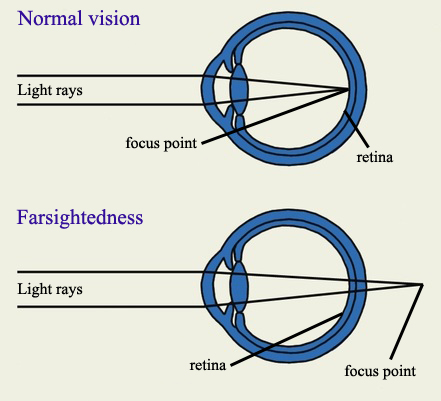Hyperopia (Farsightedness)
 Farsightedness, medically known as hyperopia, refers to vision that is good at a distance but not at close range. Farsightedness occurs when the eyeball is shorter than normal, as measured from front to back, or when the cornea has too little curvature. This reduces the distance between the cornea and retina, causing light to converge behind the retina, rather than on it.
Farsightedness, medically known as hyperopia, refers to vision that is good at a distance but not at close range. Farsightedness occurs when the eyeball is shorter than normal, as measured from front to back, or when the cornea has too little curvature. This reduces the distance between the cornea and retina, causing light to converge behind the retina, rather than on it.
If you are mildly farsighted, your eye care provider may not recommend corrective treatment at all. However, if you are moderately or severely hyperopic, you may have several treatment options available, including eyeglasses, contacts, LASIK and photorefractive keratectomy (PRK). Your eye care provider at Dr. Mark Sorrentino, O.D. will help you determine the best treatment option for you.